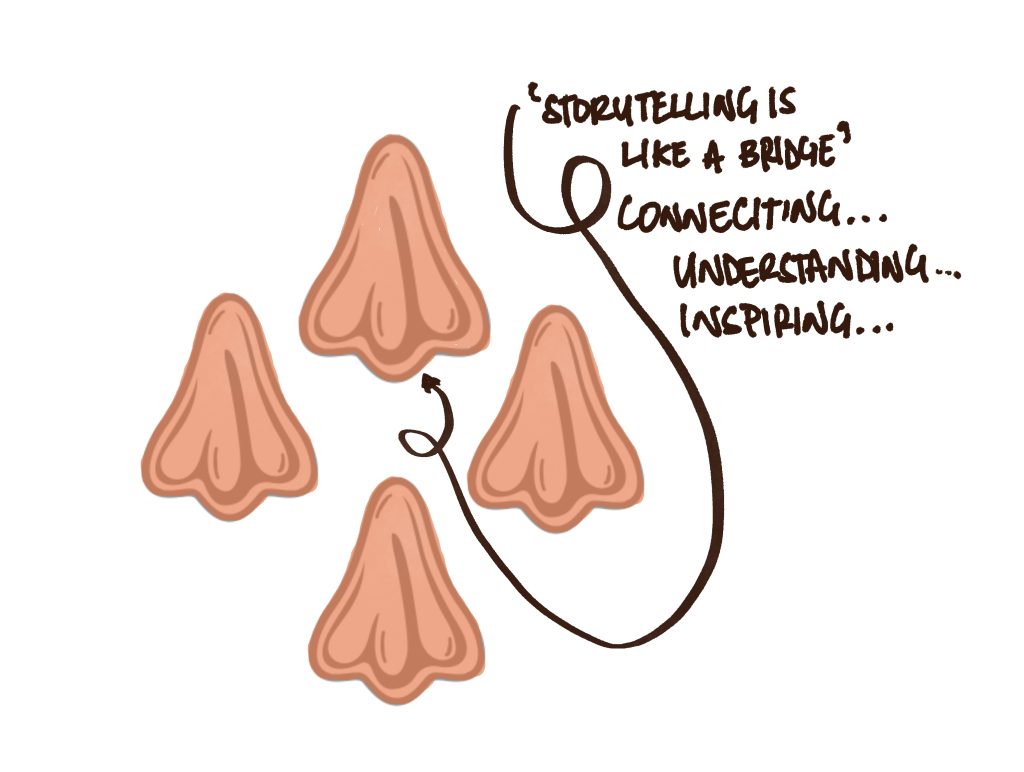
Storytelling is a powerful tool for connection and influence, and over the years, I have come to appreciate the art of articulating the why and the what. Storytelling is one of the tools in my toolbag when engaging and connecting with people, and it has become an essential part of how I lead and present. I have used stories, analogies, or pictures to simplify complex ideas into something more digestible and, more importantly, to make my key points relatable and memorable.
Know Your Audience
One of my earliest experiences tailoring a story was when the team and I introduced service-level objectives. The term was new then, and we needed to convey its importance clearly. Explaining what service-level objectives can be daunting to non-technical folks, and at the time, we needed to influence a key stakeholder who was critical to get a seal of approval before work could even begin. This stakeholder loved lollies, especially orange ones. So, I built my presentation around this preference, connecting orange jet planes with service-level objectives. It worked.
#1 Identify Your Audience
Understand who you speak to, their roles, and interests. This allows you to tailor your message to resonate with them. For example, using technical jargon and detailed explanations might be appropriate in a room of engineers, while a more high-level approach could be better for executives.
#2 Recognise Influencers
If you are presenting in a group setting, identify the individual(s) who hold more sway. Identifying these key influencers can help you shape your story to directly address their concerns and interests directly, thereby gaining broader support. Influencers can help spread your message and advocate for your ideas within the group.
#3 Utilise Visuals
People connect and remember better when they can anchor to something visual. Using relevant images, diagrams, or analogies can make your message more memorable and impactful. For instance, linking complex concepts to familiar objects or scenarios helps simplify the message and ensure it sticks.
Framing Your Story
Learning to frame complex or technical information into something consumable for all has been a crucial lesson. Part of knowing your audience is considering how they consume information and the level of detail needed. Adjusting the amount of information on your slides and the number of slides can make a big difference. One approach I’ve found helpful is the Minto Pyramid Principle, which helps structure information clearly and effectively.
Here is why using the Minto method is effective:
#1 Clarity and Conciseness
The Minto Pyramid Principle ensures that your main points are clear and concise, making it easier for your audience to grasp the core message quickly.
#2 Logical Flow
It organises information logically, helping your audience follow your thought process seamlessly from the introduction to the conclusion.
#3 Focused Communication
Structuring your story with a top-down approach keeps the communication targeted and prevents information overload, highlighting only relevant details.
Start with the Why
Switching up my approach to storytelling by starting with the why has been eye-opening. Simon Sinek famously said, “People don’t buy what you do; they buy why you do it. And what you do proves what you believe.” Initially, I thought it would be self-explanatory to state what we wanted to do. However, multiple instances showed that people didn’t buy into it, leading me to read various books, talk to mentors, and experiment with different storytelling techniques.
Here are a few tips I found helpful:
#1 Starting with the Why
Begin by explaining why something is important. It creates a connection and aligns your audience with the purpose behind your message. When people understand the motivation and the larger purpose, they are more likely to engage and support your ideas.
#2 Define the Purpose and Expected Outcome
Whether running a workshop or seeking information, clearly state the purpose and what you aim to achieve. It helps participants understand their role and what is expected, ensuring everyone is on the same page and working towards a common goal.
#3 Use Familiar Language
Using language that resonates with your audience is crucial. Avoid jargon unless your audience commonly understands it. Clear and familiar language prevents misunderstandings and ensures your message is conveyed accurately.
In summary, tailoring your story to your audience is crucial for effective communication. Use stories, analogies, and pictures to explain the concept, making it memorable and relatable. Key strategies include identifying your audience’s roles and interests, recognising influencers within a group to address their concerns directly, and utilising visuals to make complex concepts more understandable and engaging.
Happy storytelling!
Recent Comments